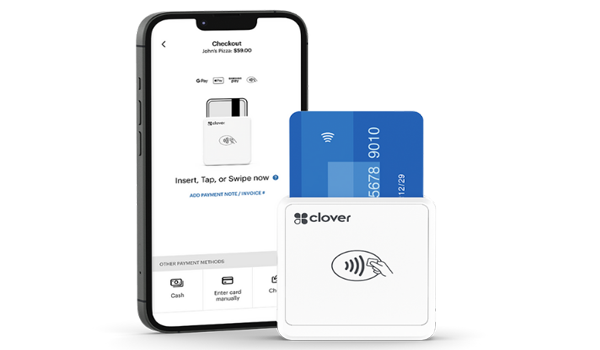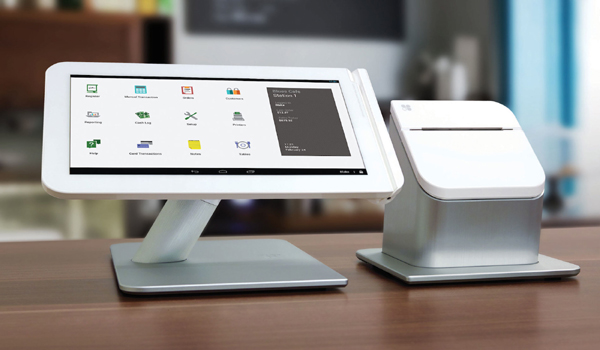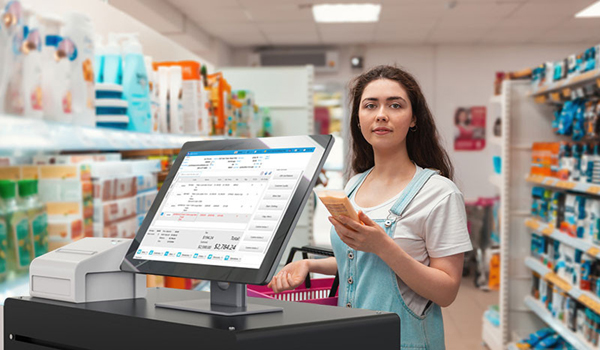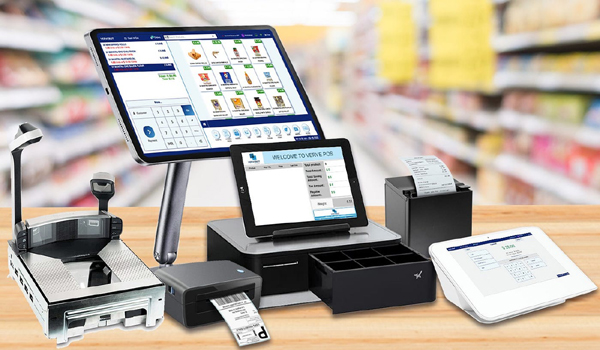
Online Shopping Cart Processing
An online shopping cart is a piece of software that enables customers to choose products and make online purchases.
Online shopping cart processing, also known as e-commerce shopping cart processing, refers to the digital process of managing and facilitating the purchase of products or services on an e-commerce website. It encompasses the entire journey that a customer takes from selecting items for purchase to completing the payment and receiving order confirmation.
Here's a breakdown of the key aspects of online shopping cart processing
- Product Selection: Customers browse through the online store, view product descriptions, images, and prices, and add desired items to their virtual shopping cart.
- Shopping Cart Management: Customers can view and edit the contents of their shopping cart. They can adjust quantities, remove items, or save items for later.
- Proceeding to Checkout: Once customers are ready to make a purchase, they proceed to the checkout. They provide billing and shipping information and select their preferred payment method.
- Payment Processing: The shopping cart system securely processes the payment, which may involve credit card transactions, digital wallets, or other payment options. This step requires encryption and secure handling of sensitive financial information.
- Order Review: Customers have the opportunity to review their order, verify the details, and apply any applicable coupons or discounts.
- Confirmation: After reviewing and confirming the order, customers receive a confirmation page, and an email receipt is sent to them. The customer's order is processed and prepared for shipment.
- Post-Purchase Engagement: Customers may receive order tracking information, shipment notifications, and post-purchase emails requesting feedback or offering additional products or services.
- Security and Trust: It's crucial for the entire process to be secure and for customers to trust that their personal and financial information is protected. Security measures include SSL encryption and the display of trust badges.
Importance of Online Shopping Cart
There are opposing views on how simple using the internet is. Customers are more likely to disregard and abandon things if they can buy goods and services more easily. Since browsers might not become customers, the transitional function of the online shopping cart is crucial for a business to increase conversion rate.
Online shopping carts are a fundamental element of e-commerce that plays a pivotal role in the success of online businesses. Here's why they are essential:
- Convenience: Shopping carts allow customers to add products to a virtual cart as they browse an online store. This convenience replaces the need to physically carry items around a brick-and-mortar store.
- Product Organization: They serve as a means to organize and keep track of selected items, providing an overview of the shopping session.
- Comparison: Shoppers can compare items, check prices, and make informed decisions before making a purchase.
- Saved Selections: The cart often retains selections for future visits, allowing customers to continue shopping where they left off.
- Smooth Transition to Checkout: The cart seamlessly transitions customers to the checkout process, streamlining the purchase journey.
- Increased Sales: By offering a straightforward method for customers to shop and complete their orders, shopping carts can lead to higher conversion rates and increased sales for online businesses.
Key Components of a Shopping Cart Process
A shopping cart process consists of several key components, each playing a specific role in the online shopping experience:
- Product Display: Customers view product details, images, and prices before adding items to the cart.
- Add to Cart Functionality: A fundamental feature allowing customers to add chosen items to the cart.
- Cart Management: Users can review cart contents, update quantities, and remove items they no longer wish to purchase.
- Checkout Process: Transitioning from the cart to the checkout, where billing and shipping information is entered, and payment methods are chosen.
- Security Measures: Ensuring the security of sensitive data during the payment processing phase, typically through SSL encryption.
- Confirmation and Receipt: Providing customers with a summary of their order and a confirmation receipt after a successful purchase.
- Post-Purchase Engagement: Engaging with customers through order tracking, shipment notifications, and feedback requests to enhance the post-purchase experience.
Why a Smooth Shopping Cart Experience Matters
A smooth shopping cart experience is critical for several reasons:
- Reduced Cart Abandonment: A complicated or frustrating shopping cart process can lead to cart abandonment, causing businesses to lose potential sales.
- Customer Satisfaction: A user-friendly cart process contributes to overall customer satisfaction, which can lead to repeat business and positive reviews.
- Higher Conversion Rates: An intuitive and efficient cart experience increases the likelihood that customers will complete their purchases, improving conversion rates.
- Competitive Advantage: Providing a smooth cart process can set businesses apart from competitors and attract more customers.
- Trust and Security: Shoppers need to trust that their personal and financial information is secure during the cart process, emphasizing the importance of security measures.
Selecting the Right Shopping Cart System
Selecting the right shopping cart system is a pivotal decision for any e-commerce business. Here's a detailed look at the key aspects:
Factors to Consider When Choosing a Shopping Cart:
- Budget: Determine your budget for a shopping cart system. Costs may include software licensing, transaction fees, and maintenance. Consider the long-term affordability.
- Scalability: Assess your business's growth potential. A shopping cart should accommodate your business as it expands, offering features and capabilities that scale with your needs.
- Ease of Use: User-friendliness is essential. A shopping cart should be easy for both customers and staff to navigate. A complex system may deter customers from completing purchases.
- Customization: Look for a cart system that allows you to tailor the appearance and functionality of your online store to match your brand and unique requirements.
- Payment Options: Ensure the cart supports a variety of payment methods, including credit cards, digital wallets, and alternative payment options to cater to a diverse customer base.
- Security: Security is paramount. Ensure the shopping cart system complies with industry standards for data security (such as PCI DSS) and offers features like SSL encryption.
- SEO-Friendly: An SEO-optimized shopping cart can boost your online visibility. Look for features that support SEO, such as customizable URLs, metadata, and sitemaps.
- Mobile Responsiveness: With the growing use of mobile devices for online shopping, your cart must be mobile-responsive to offer a seamless experience to mobile users.
- Integration Capabilities: Consider how the cart can integrate with your existing systems. It should support integration with accounting software, inventory management, and other business tools.
- Customer Support: Evaluate the level of customer support provided by the cart's developer. Reliable support is crucial for addressing issues and receiving timely assistance.
Comparing Popular Shopping Cart Software:
To make an informed choice, compare and contrast popular shopping cart software
When comparing popular shopping cart software, it's essential to make an informed choice. There are many such platforms available today. Shopify, a widely used and user-friendly platform, suits businesses of all sizes, offering diverse templates and third-party app integration. WooCommerce, an open-source solution, seamlessly integrates with WordPress, providing extensive customization options, primarily for those familiar with WordPress. BigCommerce is renowned for scalability and robust features, supporting a variety of payment gateways and advanced SEO tools.
Making the Best Choice for Your Business:
The best choice for your business depends on a variety of factors, including your budget, the scale of your operations, your technical expertise, and your specific needs. To make the best choice:
Evaluate Priorities: List your business's priorities and needs, considering factors like budget, scalability, customization, and integration requirements.
- Seek Expert Opinions: Consult with experts in e-commerce or web development for guidance on which platform aligns best with your goals.
- Trial Runs: Consider conducting trials or free trials of shopping cart software to get a hands-on experience and assess their compatibility with your business.
- Plan for Growth: Choose a system that not only meets your current needs but also accommodates future growth and expansion.
- Consider Customer Experience: Think about the experience your customers will have while using the cart. A smooth and user-friendly process can lead to higher conversion rates.
- Review Feedback: Look for user reviews and testimonials to learn from the experiences of other businesses that have used the same shopping cart.
Selecting the right shopping cart system is a crucial step in establishing a successful online presence. Careful consideration of these factors, a thorough comparison of popular software, and a focus on your business's unique requirements will help you make the best choice.
Adding Products to the Cart
- Product Listings and Descriptions: This is where customers encounter products in your online store. You need to provide comprehensive information, including product name, price, specifications, and a compelling description to entice customers to add items to their carts.
- Product Images and Multimedia: Visual appeal is crucial. High-quality images, videos, and other multimedia elements help customers make informed choices. Multiple images from different angles and videos showcasing the product in use can be particularly helpful.
- Product Variations and Options: If you offer products with variations (e.g., sizes, colors), your cart should allow customers to select these options. Each variation may have different prices, stock levels, and images.
- User Reviews and Ratings: Customer reviews and ratings can influence purchase decisions. Encourage customers to leave feedback and rate products, and ensure that these are easily accessible in your product listings.
Cart Management and User Interaction
- Viewing and Modifying Cart Contents: This section focuses on the customer's ability to review and edit the contents of their cart. They should see the items, quantities, and prices. Allow them to adjust quantities, remove items, and update prices based on their changes.
- Saving Carts for Later: Customers may not always make an immediate purchase. Providing the option to save a cart for later encourages them to return and complete the purchase at their convenience.
- Removing Items and Quantity Adjustments: Make it easy for customers to remove items from their cart or change the quantity.
- Wishlist and Favorites: Beyond the cart, enabling customers to create wishlists or mark items as favorites allows them to keep track of products they are interested in, even if they're not ready to buy.
- Sharing Carts with Others: This feature is useful for gift shopping or collaborative decision-making. Customers can share their cart contents with others for input or purchasing.
Proceeding to Checkout
- The Checkout Process Overview: Explain the stages and components of the checkout process. Provide a clear path from the cart to the checkout page, guiding customers through billing, shipping, and payment.
- Guest Checkout vs. Account Creation: Discuss the pros and cons of guest checkout and account creation. Many customers prefer a streamlined guest checkout, but account creation can offer benefits like order history and loyalty rewards.
- Billing and Shipping Information: Customers should be able to input billing and shipping details accurately and securely. Explain the necessity of these details for order processing.
- Payment Methods: Present the various payment methods supported by your online store, including credit cards, digital wallets, and alternative payment options. Customers need assurance that their payments are secure.
- Applying Coupons and Discounts: Describe how customers can apply discounts or coupons to their order. It's important to make this process user-friendly and ensure that the discount is accurately reflected.
Security and Trust in Online Shopping Carts
- SSL Encryption and Data Security: Explain how SSL encryption safeguards sensitive data during transactions. Describe your commitment to data security and the steps taken to protect customer information.
- Trust Seals and Security Badges: Showcase any trust seals or security badges on your website that certify your commitment to data protection and secure payment processing.
- Privacy Policies and GDPR Compliance: Detail your privacy policy and compliance with data protection regulations like GDPR. Transparency and data protection build trust with customers.
- Handling Customer Data: Clarify how customer data is handled, stored, and used. Customer trust is bolstered when they know their data is handled responsibly.
Cart Review and Confirmation
- Order Summary and Confirmation Page: After customers finalize their orders, they should be presented with a clear order summary detailing the products, quantities, prices, and a total. The confirmation page serves as a receipt.
- Order Receipt and Confirmation Emails: Discuss the importance of sending order receipts and confirmation emails to customers. These communications provide assurance and a record of the transaction.
- Post-Purchase Options: Outline any post-purchase options available, such as order tracking, changes to the order, or contacting customer support. These options enhance the customer experience.
- Returns and Refunds: Clarifying your return and refund policies is pivotal for building trust and ensuring customers have a clear understanding of their options in case they are dissatisfied with their purchase.
Post-Purchase Customer Engagement
- Order Tracking and Shipment Notifications: Detail how customers can track the progress of their orders and receive notifications regarding shipments. Transparency is key to post-purchase satisfaction.
- Customer Feedback and Reviews: Encourage customers to provide feedback and reviews. Explain how these reviews can help other shoppers and offer insights into improving your products and services.
- Loyalty Programs and Customer Retention: Describe any loyalty programs or retention strategies you have in place to encourage repeat business. Loyalty rewards and special offers can keep customers engaged.
- Upselling and Cross-Selling: Explain how your online store utilizes upselling and cross-selling techniques to introduce customers to related or complementary products, increasing sales opportunities.
Troubleshooting and Cart Optimization
- Common Cart Issues and Solutions: Address common issues that customers may encounter during the shopping and checkout process.
- Performance Optimization: Discuss the importance of a fast and responsive cart system. Detail how performance optimization techniques are implemented to ensure a seamless user experience.
- Customer Support and Assistance: Describe the customer support options available, including how customers can reach out for assistance with any issues they encounter.
Conclusion
The article delves into the comprehensive landscape of online shopping carts processing, tracing their evolution and pivotal role in enhancing the online shopping experience. Over time, shopping carts have transformed the way consumers interact with e-commerce platforms, offering convenience, user-friendly interfaces, and a myriad of features. From simplified product listings and visuals to advanced cart management and security protocols, the shopping cart journey has been marked by a commitment to efficiency and customer satisfaction.
Looking ahead, the future of e-commerce and shopping cart processing is poised for further innovation. Emerging technologies such as AI-driven personalization, augmented reality shopping experiences, and streamlined mobile integration are expected to reshape the way customers shop online.
Additionally, a heightened focus on data security and privacy, coupled with evolving customer expectations, will continue to drive improvements in online shopping cart processing.









